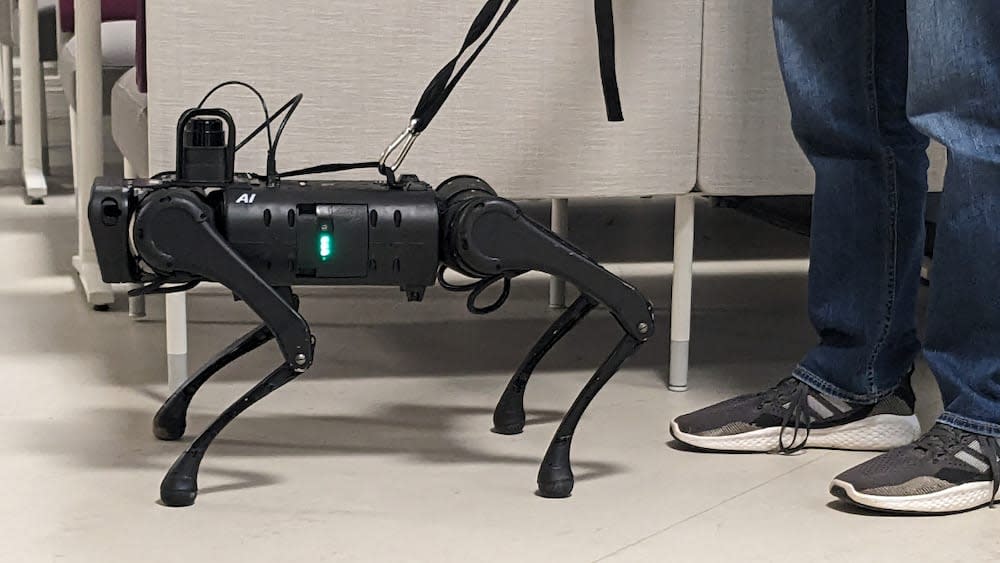Scientists Have Created a Robotic Seeing Eye Dog

Despite their ability to improve the livelihoods of visually-impaired people, guide dogs are actually pretty rare. Roughly 2 percent of all people who are blind or visually impaired have access to the animals, according to the National Federation of the Blind.
Much of this is due to the cost: training one of these canines from puppy to working dog can cost up to $50,000 to $60,000 a year. About half of the puppies who enter training aren’t able to complete it either. Researchers want to find ways to cut down both on the money, resources, and time required to train these animals. If they do so, it could drastically increase accessibility for blind and visually-impaired people.
While nothing beats having a loyal pup, some scientists believe that there could be a technological alternative. That’s why a team of engineers at Binghamton University in New York have created a seeing eye robotic dog capable of guiding the visually impaired.
That’s right: AI is even taking our dogs’ jobs.
Watch a Boston Dynamics Robot Dog Talk Using OpenAI's ChatGPT
The robo-dog, which will be presented at the Conference on Robotic Learning later this month, utilizes artificial intelligence and machine learning to successfully (and safely) navigate users around its environment—and it’s able to do so at a fraction of the cost and time of a normal seeing eye dog.
“In about 10 hours of training, these robots are able to move around, navigating the indoor environment, guiding people, avoiding obstacles, and at the same time, being able to detect the tugs,” Shiqi Zhang, an assistant professor of computer science at SUNY Binghamton and co-creator of the robot, said in a statement.
The robo-dog actually utilizes a “leash-tugging” interface that allows the user to pull the device in different directions and cause it to move in response much like how a real dog moves (or at least, is supposed to if they’re a good boy). For example, if the user encounters an intersection and wants to go a certain direction, the robot will move seamlessly with them.
Despite the promise and successful experiment, there’s still a lot of work that needs to be done before this is ready for prime time. The researchers have been working with the National Federation of the Blind to hopefully include features like a warning system in case the user encounters uneven terrain.
A Dog’s Love Can Show Robots How to Love Us, Too
Interestingly, the team is also looking to give the robo-dog a voice so that it can speak and respond to its user. While a talking robot dog might seem like something out of a sci-fi movie, it’s actually been recently accomplished by engineers at Boston Dynamics who have used ChatGPT to give their robo-dog Spot the ability to talk.
“So ideally, I could have a conversation with the robot based on the situation to get some help,” Zhang said. “Also, intelligent disobedience is an important capability. For example, if I’m visually impaired and I tell the robot dog to walk into traffic, we would want the robot to understand that. We should disregard what the human wants in that situation. Those are some future directions we’re looking into.”
(But not too disobedient—lest we end up with a Skynet situation a la Terminator.)
For now, though, the robotic dog holds a ton of potential to be truly transformative for the roughly 1 million people with blindness in the U.S.. Let’s just hope they require a lot less potty breaks than man’s best friend.
Get the Daily Beast's biggest scoops and scandals delivered right to your inbox. Sign up now.
Stay informed and gain unlimited access to the Daily Beast's unmatched reporting. Subscribe now.

